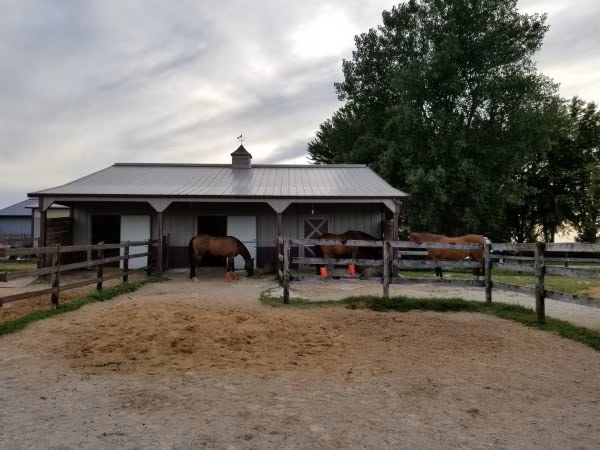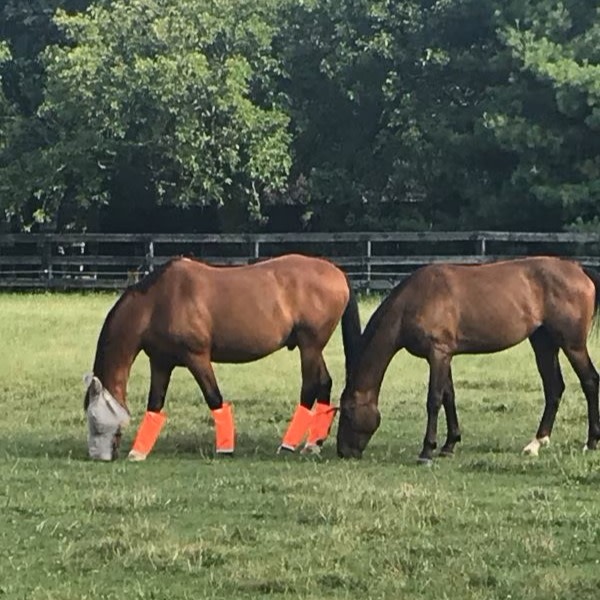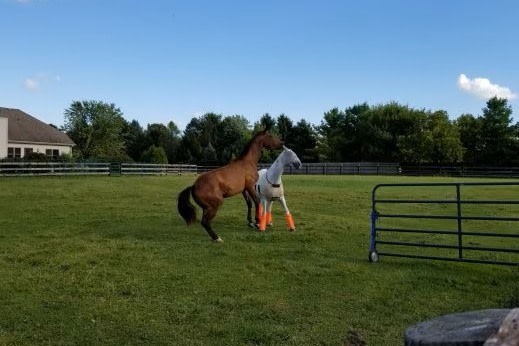How to Safely Introduce a New Horse to Your Herd
Updated April 8, 2024

Introducing a newcomer to your already established herd can be an intimidating task and it's important to reduce the risks. The main goal in introducing a new horse to an existing herd is to do it safely - you don’t want any horse or human harmed during the first meeting.
Remember, horses are herd animals and will assert a pecking order naturally. When horses determine who is higher on the pecking order, it can result in some “bullying.” Here are some tips and tricks to help your horses make good introductions to each other.
Understand Herd Mentality and Dynamics
One of the most important things to know are the horses' personalities in your herd and of the new horse being introduced. Who is the head honcho and who is lowest-ranked? Who fights over food?
Herd mentality may make the leader of the herd protective towards threats, like a new horse. It’s their job to protect the weaker members of the herd. So, if your herd leader is a dominant mare and you introduce a new horse to the group, she could act defensively to protect against this outside threat.
Check for Pasture and Fence Safety
Tour the pasture before introducing a new horse to the herd. Make sure everything is safe and there are no broken boards, protruding nails, or holes in the fence line. After ensuring everything is safe, block off dead areas, including corners, lean-tos, and sheds as horses can get trapped in these areas.
How to Slowly Introduce a New Horse to Your Herd
Keep your new horse separated by a reasonable distance for the first few days. If you have a pasture in between your new horse and the herd, this helps creates a safe space and allow them to see each other but not touch. They can whinny and run fence lines all they want, but they aren't in danger of biting, kicking, or trampling one another.
When your herd starts showing positive interest in the new horse, you can begin to bring them closer. Take your time throughout this process if you still feel tension or have a particularly territorial horse.
Move Your Horse and Herd to Adjoining Paddocks

After you are comfortable bringing them closer, move your new horse into an adjoining paddock for two or three days. This lets the horses get to know each other, sniff, and make noise over a fence line. Do not put horses in adjoining paddocks if you have rickety or barbed-wire fencing.
Combining the Herd
After several more days, you may be ready to finally introduce the new horse to the rest of their barn mates. Do this during daylight, after everyone has eaten, and when it is not overly hot. You also want to avoid muddy pastures or ice as it makes the ground slippery. Be prepared to interject if necessary! Another safe move would be to remove the horses’ hind shoes, just in case!

Start by moving a middle-ranking, non-aggressive horse in with the newcomer for a few days. The new horse will be able to bond with this middle-ranking horse which can offer him some protection before meeting the entire herd. Don’t use the top-dog or lowest horse on the totem pole for this step because either situation has its own complications.
Once you feel comfortable and are ready for the new horse to meet everyone, the safest way is by opening a gate between the two pastures. You should refrain from leading your new horse into the pasture as that could create a tense and dangerous position for any handler!

At this point, the horses will be familiar with their smells but the introduction will probably send sparks for a few minutes. Depending on your horses' ages and energy levels, it could take longer for them to settle. Once they do calm down, allow them to graze, get some water, and then check them all over for any signs of cuts or injuries. Continue to monitor the herd over the next few days.